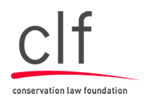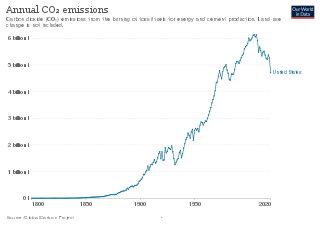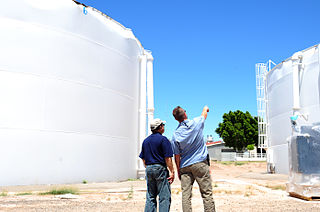The Clean Water Act (S.O. 2006, Chapter 22) is a law enacted by the Legislative Assembly of Ontario, Canada. The purpose of this Act is to protect existing and future sources of drinking water.
The Clean Water Act, 2006 (Bill 43) is a major part of the Ontario government's commitment to ensuring that every Ontarian has access to safe drinking water. Protecting water at its source is the first step in the multi-barrier approach to source water protection. By stopping contaminants from getting into sources of drinking water — lakes, rivers and aquifers — we can provide the first line of defence in the protection of our environment and the health of Ontarians. For the first time, communities will be required to create and carry out a plan to protect the sources of their municipal drinking water supplies. The Clean Water Act, 2006 will:
The legislation sets out a basic framework for the establishment of community-based groups that represent a cross-section of sectors and geographic areas within Conservation Authority boundaries. These community-based groups are called Source Protection Committees and there are 19 such groups across Ontario. The Clean Water Act, 2006 also introduced the Ontario Drinking Water Stewardship Program (ODWSP) a financial assistance program for farmers, landowners and small or medium businesses for activities that reduce threats to municipal drinking water sources.

Environmental laws are laws that protect the environment. Environmental law is the collection of laws, regulations, agreements and common law that governs how humans interact with their environment. This includes environmental regulations; laws governing management of natural resources, such as forests, minerals, or fisheries; and related topics such as environmental impact assessments.Environmental law is seen as the body of laws concerned with the protection of living things from the harm that human activity may immediately or eventually cause to them or their species, either directly or to the media and the habits on which they depend.

The Environmental Protection Agency (EPA) is an independent agency of the United States government tasked with environmental protection matters. President Richard Nixon proposed the establishment of EPA on July 9, 1970; it began operation on December 2, 1970, after Nixon signed an executive order. The order establishing the EPA was ratified by committee hearings in the House and Senate.

Drinking water or potable water is water that is safe for ingestion, either when drunk directly in liquid form or consumed indirectly through food preparation. It is often supplied through taps in which case it is also called tap water. Typically in developed countries, tap water meets drinking water quality standards, even though only a small proportion is actually consumed or used in food preparation. Other typical uses for tap water include washing, toilets, and irrigation. Greywater may also be used for toilets or irrigation. Its use for irrigation however may be associated with risks.

The Clean Water Act (CWA) is the primary federal law in the United States governing water pollution. Its objective is to restore and maintain the chemical, physical, and biological integrity of the nation's waters; recognizing the responsibilities of the states in addressing pollution and providing assistance to states to do so, including funding for publicly owned treatment works for the improvement of wastewater treatment; and maintaining the integrity of wetlands.
A conservation authority is a local, community-based natural resource management agency based in Ontario, Canada. Conservation authorities represent groupings of municipalities on a watershed basis and work in partnership with other agencies to carry out natural resource management activities within their respective watersheds, on behalf of their member municipalities and the Province of Ontario.

The Safe Drinking Water Act (SDWA) is the principal federal law in the United States intended to ensure safe drinking water for the public. Pursuant to the act, the Environmental Protection Agency (EPA) is required to set standards for drinking water quality and oversee all states, localities, and water suppliers that implement the standards.

Conservation Law Foundation (CLF) is an environmental advocacy organization based in New England. Since 1966, CLF's mission has been to advocate for New England's environment and its communities. CLF's advocacy work takes place across five integrated program areas: Clean Energy & Climate Change, Clean Air & Water, Healthy Oceans, People & Justice, and Healthy Communities. CLF uses the law, science, and the market to create solutions that preserve natural resources, build healthy communities, and sustain a vibrant economy. CLF works to promote renewable energy and fight air and water pollution; build sustainable fishing communities and protect marine habitat; promote public transit and defend public health; achieve environmental justice; and sustain a vibrant, equitable economy.

The Environment Protection and Biodiversity Conservation Act 1999(Cth) is an Act of the Parliament of Australia that provides a framework for protection of the Australian environment, including its biodiversity and its natural and culturally significant places. Enacted on 17 July 2000, it established a range of processes to help protect and promote the recovery of threatened species and ecological communities, and preserve significant places from decline. The Act is as of June 2020 administered by the Department of Agriculture, Water and the Environment. Lists of threatened species are drawn up under the Act, and these lists, the primary reference to threatened species in Australia, are available online through the Species Profile and Threats Database (SPRAT).

Water testing is a broad description for various procedures used to analyze water quality. Millions of water quality tests are carried out daily to fulfill regulatory requirements and to maintain safety.

Water supply and sanitation in Canada is nearly universal and generally of good quality, but a lack of clean drinking water in many First Nations communities remains a problem. Water use in Canada is high compared to Europe, since water tariffs are low and 44% of users are not metered.
The Colorado Water Quality Control Division is part of the Colorado Department of Public Health and Environment. The Water Quality Control Division implements the federal Clean Water Act and Safe Drinking Water Act in Colorado. It is responsible for water control for the state of Colorado to ensure the protection of both the environment and the public. The division enforces these laws through methods such as implementing local laws and regulations, permits, and routine inspections of public water systems and facilities.

The environmental policy of the United States is a federal governmental action to regulate activities that have an environmental impact in the United States. The goal of environmental policy is to protect the environment for future generations while interfering as little as possible with the efficiency of commerce or the liberty of the people and to limit inequity in who is burdened with environmental costs. As his first official act bringing in the 1970s, President Richard Nixon signed the U.S. National Environmental Policy Act (NEPA) into law on New Years Day, 1970. Also in the same year, America began celebrating Earth Day, which has been called "the big bang of U.S. environmental politics, launching the country on a sweeping social learning curve about ecological management never before experienced or attempted in any other nation." NEPA established a comprehensive US national environmental policy and created the requirement to prepare an environmental impact statement for “major federal actions significantly affecting the quality of the environment.” Author and consultant Charles H. Eccleston has called NEPA the world's “environmental Magna Carta”.
Source Protection Committees were established under the Province of Ontario’s Clean Water Act, 2006 to create and carry out a plan to protect municipal sources of drinking water.
Missouri Coalition for the Environment, a non-profit, non-partisan, 501(c)(3) state-level conservation organization, campaigns for clean air, clean water and clean energy in Missouri. The organization is member and grant supported.
The Drinking Water Directive 2020 is an EU law that protects the quality of drinking water and forms part of the regulation of water supply and sanitation in the European Union.

There are many exemptions for fracking under United States federal law: the oil and gas industries are exempt or excluded from certain sections of a number of the major federal environmental laws. These laws range from protecting clean water and air, to preventing the release of toxic substances and chemicals into the environment: the Clean Air Act, Clean Water Act, Safe Drinking Water Act, National Environmental Policy Act, Resource Conservation and Recovery Act, Emergency Planning and Community Right-to-Know Act, and the Comprehensive Environmental Response, Compensation, and Liability Act, commonly known as Superfund.
Water in Arkansas is an important issue encompassing the conservation, protection, management, distribution and use of the water resource in the state. Arkansas contains a mixture of groundwater and surface water, with a variety of state and federal agencies responsible for the regulation of the water resource. In accordance with agency rules, state, and federal law, the state's water treatment facilities utilize engineering, chemistry, science and technology to treat raw water from the environment to potable water standards and distribute it through water mains to homes, farms, business and industrial customers. Following use, wastewater is collected in collection and conveyance systems, decentralized sewer systems or septic tanks and treated in accordance with regulations at publicly owned treatment works (POTWs) before being discharged to the environment.

The Porter-Cologne Water Quality Control Act is pioneering clean water act of California that expanded the enforcement authority of the State Water Resources Control Board and the 9 Regional Water Quality Control Boards. The act provided for the California Environmental Protection Agency to create the local boards and better protect water rights and water quality.

An Act to restore Ontario's competitiveness by amending or repealing certain Acts is a law adopted on April 3, 2019, during the 42nd Parliament of Ontario. Critics of the bill argue that, if passed, it will repeal a number of consumer protections, labour laws, anti-crime rules, clean water rules, child safety rules, and environmental protections in the Province of Ontario. On the other hand, one study showed that there were significant public savings to be had through adoption of the bill: The City of Waterloo saw a 14% drop in the average amount of the winning bid for public construction projects while the city of Toronto, in 2019, could have saved up to $381 million.
The Wellhead Protection Program in the 1986 amendments to the Safe Drinking Water Act requires states to protect underground sources of drinking water from contaminants that may adversely affect human health. More than one-third of the people in the United States depend on groundwater for drinking water. However, residential, municipal, commercial, industrial, and agricultural activities can all contaminate groundwater. In the event of contamination, a community's drinking water supply can develop poor quality or be lost altogether. Groundwater contamination might not be detected for a long period of time and health problems can occur from drinking contaminated water. Cleanup of a contaminated underground source of drinking water may be impossible or so difficult it costs thousands or millions of dollars. The U.S. Congress requiring Wellhead Protection Programs by 42 U.S.C. § 300h–7 in the Safe Drinking Water Act applied the concept that it is better to prevent groundwater contamination than try to remediate it. U.S. Congress by 42 U.S.C. § 300h–7 requires identification of the areas that need implementation of control measures in order to protect public water supply wells from contamination as "wellhead protection areas". Communities can use the police power established by the Tenth Amendment to the U.S. Constitution to enforce zoning and subdivision regulations to protect drinking water sources. Thereby communities can direct development away from areas that would pose a threat to drinking water sources.